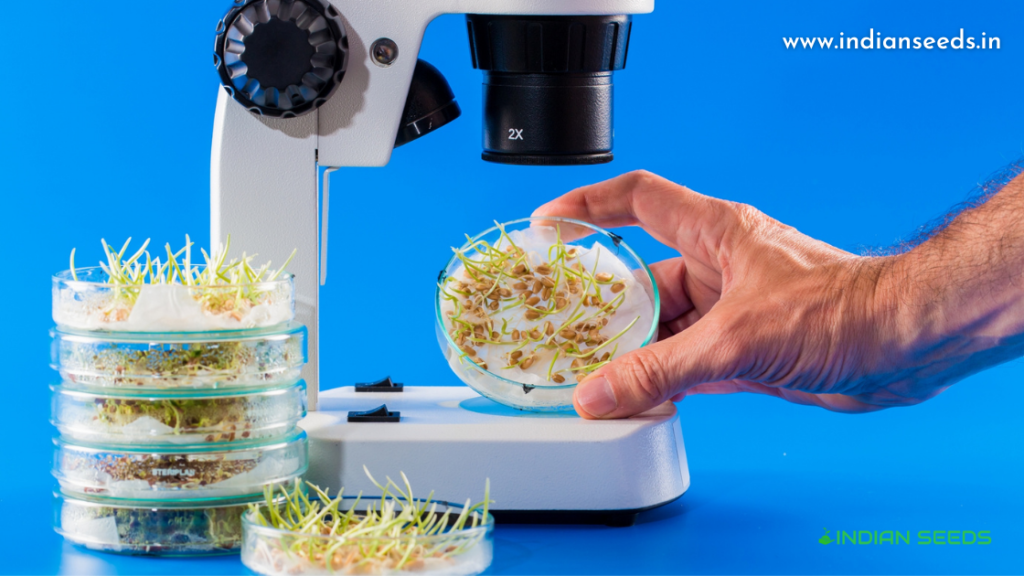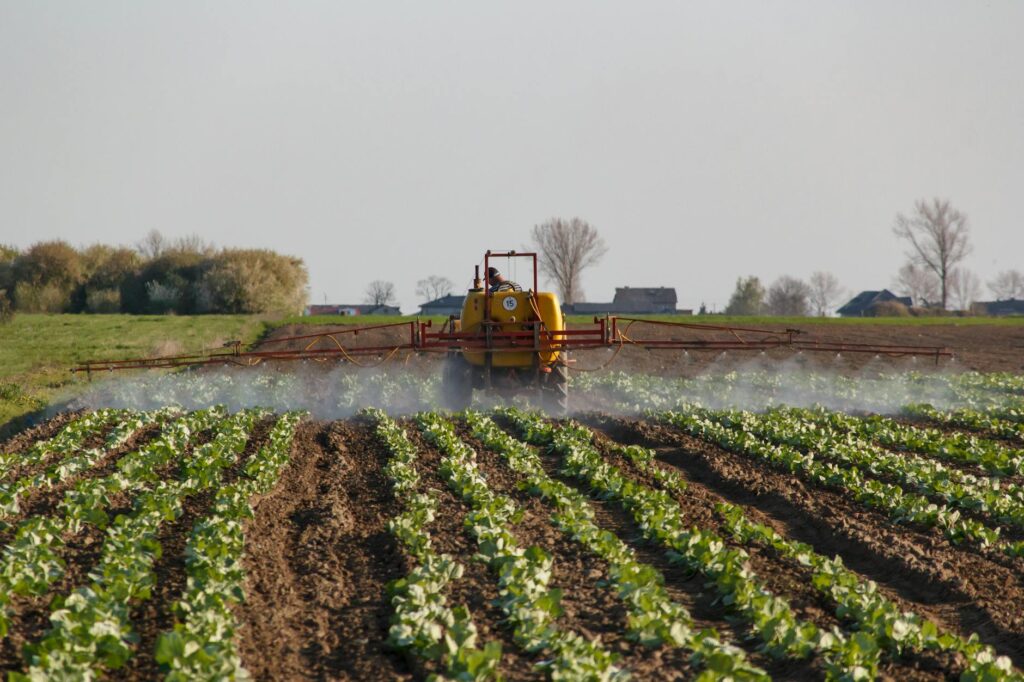What is Seed Certification?
In general, Seed Certification is a process for ensuring the physical identity and genetic purity of registered varieties.
In general, Seed Certification is a process for ensuring the physical identity and genetic purity of registered varieties. Seed Certification ensures a continuous supply of high-quality seeds varieties and propagation materials to the general public.
Seed certification is a legally recognized system for ensuring the quality of seed production and multiplication.
The Origins of Seed Certification
The origins of seed certification can be traced back to the turn of the twentieth century. The concept of Seed Certification arose from a growing worry about the quick loss of variety identification over production cycles.
Credit for this should go to the Swedish employees who were the first to start the process of crop seeds field evaluation. It all started with Agronomists and plant breeders visiting progressive farmers’ farms to collect seeds for new varieties.
It all started with Agronomists and plant breeders visiting progressive farmers’ farms to collect seeds for new varieties. It was primarily for the purpose of educating them on seed production. This started the field inspection process, which was later proven to be highly useful in keeping varieties pure in the manufacturing chain, but it also caused other issues.
To address some of these issues, scientists from the United States and Canada met in Chicago, Illinois in 1919 to form the International Crop Improvement Association (ICIA), which was renamed the Association of Official Seed Certifying Agencies (AOSCA) in 1969, paving the way for modern seed certification.

National Seeds Corporation & Indian Seed Act
With the foundation of the National Seeds Corporation in 1963, India began field evaluation and certification of crop seeds. With the adoption of the first Indian Seed Act in 1966 and the development of Seed Rules in 1968, seed certification gained legal status.
With the adoption of the first Indian Seed Act in 1966 and the development of Seed Rules in 1968, seed certification gained legal status. The Seed Act of 1966 gave the states the impetus they needed to establish official Seed Certification Agencies.
In 1970, Maharashtra became the first state to establish an official Seed Certifications Agency as part of the Department of Agriculture, while Karnataka became the first state to establish an autonomous Seed Certification Agency in 1974.
Under the Seed Act of 1966, 22 states in the country now have their own Seed Certification Agencies. Seed Certification is voluntary in the vast majority of countries around the world, including India, while labelling is mandatory.
Objective of Seed Certification
The fundamental goal of Seed Certification is to guarantee that seed viability, vigour, purity, and health meet acceptable requirements. The following three key objectives should be supported by a well-organized Seed Certification.
- Increasing the number of superior varieties in a systematic manner;
- The identification of new varieties and their rapid expansion under the right conditions and acceptable names;
- Careful maintenance and ensuring a steady supply of comparable material.

Eligibility for Seed Certification
To be eligible for seed certification, a variety must meet the following criteria:
General Requirements:
- Under Section 5 of the Indian Seed Act, 1966, it must be a notified variety.
- It should be part of the production chain, with a traceable pedigree.
Field Standards:
- Field standards cover things like site selection, isolation criteria, spacing, planting ratios, and border rows, among other things.
Specific Requirements:
- Presence of Off-types in any Crop Seed, pollen-shedders in Sorghum, Sunflower, Bajra and other crops, etc.
- Shedding tassels in maize crosses, unpleasant weed plants, diseased plants and other factors should be kept under control for certification.
Type of Inspections in Seed Certification
An administrative check on the Propagating Material's Origin:
The first step in the Seed Certification Program is source seed verification. The seed field will not be accepted for certification unless it comes from an authorized source and is of a recognized class, assuring the use of high grade true to type seed for seed crops.

Field Inspection:
The growing crop in the field is Evaluated for varietal purity, isolation of seed crop to prevent out-cross, disease dissemination, physical admixtures, and crop condition in terms of disease spread and the presence of objectionable weed plants, etc.
Sample Inspection:
Using laboratory testing to determine the seed’s planting value. Representative samples of seeds produced under the certification programme are taken by the certification organisation and subjected to germination and other purity tests in order to ensure varietal purity.
Bulk Inspection:
A provision for bulk inspection has been provided in the certification programme. As a result, the lot is evaluated in order to ensure that the bulk seed produced is homogeneous when compared to the standard sample. This gives a sense of the lot and sample’s genuinity.
Control Plot Testing:
In this experiment, samples from the source and the final seed produced are grown alongside standard samples of the variety in question. By comparing the findings of field inspection to the varietal purity and health of the produced seed, it can be established whether the varietal purity and health of the produced seed are equivalent.
Grow Out Testing:
Determines the seeds’ authenticity to species or varieties, as well as seed-borne illness. The samples taken from the lots, as well as the standard checks, are grown in the field. Varietal purity is checked on growing plants. The grow-out test aids in the removal of low-quality seed batches.

Phases of Seed Certification
- Seed source, class, and other requirements of the seed used to raise the seed crop are verified.
- Seed source, class, and other requirements of the seed used to raise the seed crop are verified.
- Application acceptance and evaluation.
- Field inspection of the seed crop to ensure that it meets the stipulated field standards.
- Post-harvest supervision, including processing and packing.
- Taking samples and arranging for analysis to ensure that they are in compliance with the seed criteria; and
- Certificates are issued, certification tags are issued, labels are applied, and seals are applied, among other things.
Seed Certification Agencies Functioning
Seed Certification Agencies are established in each state under the Seeds Act of 1966. Each Seed Certification Agency functions under these broad principles:
- The Seed Certification Agency should be an autonomous entity.
- The Seed Certification Agency should not be involved in seed production or marketing.
- Seed Certification Standards and Procedures should be consistent across the country.
- The Seed Certification Agency should maintain tight ties with technical and other similar agencies.
- Its long-term goal should be to run with no profit and no loss.
- The Certification Agency should have adequate staff trained in Seed Certification.
- It should include provisions for establishing adequate infrastructure to ensure timely and thorough inspections.
- It should be in the best interests of seed producers as well as farmers and users of seeds.
Organizational Structure of a Seed Certification Agency
The formation and organisation of a Seed Certification Agency require meticulous planning. When planning, take into account information such as an estimated area for certification of various crops/varieties, area of operation, farm sizes, and so on.
The Certification Agency’s organisational structure includes a Board of Directors, technical staff, and other personnel that are responsible for running the program.
Seed Certification Agencies may have their own seed testing labs or have their seed samples analysed by seed testing labs.
Please let us know your feedback on this article on seed viability test in the comments👇

















